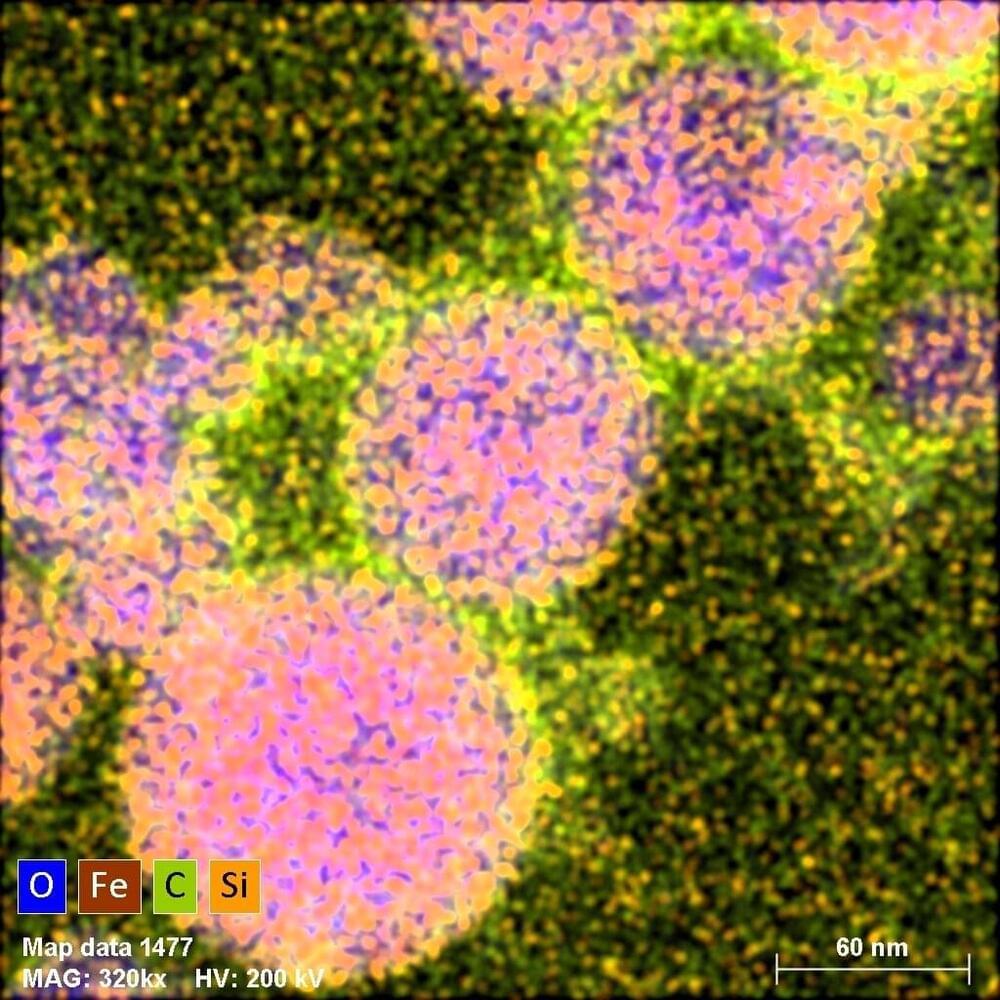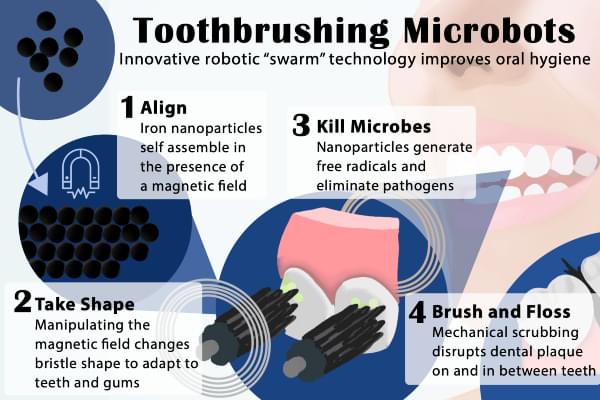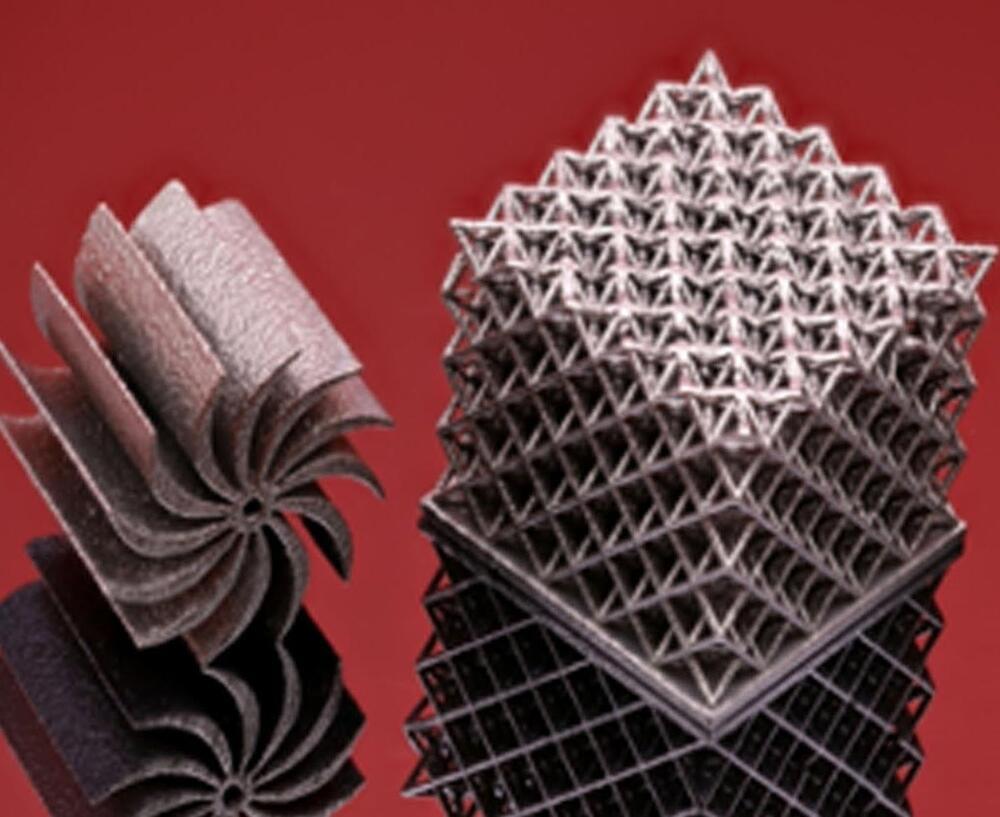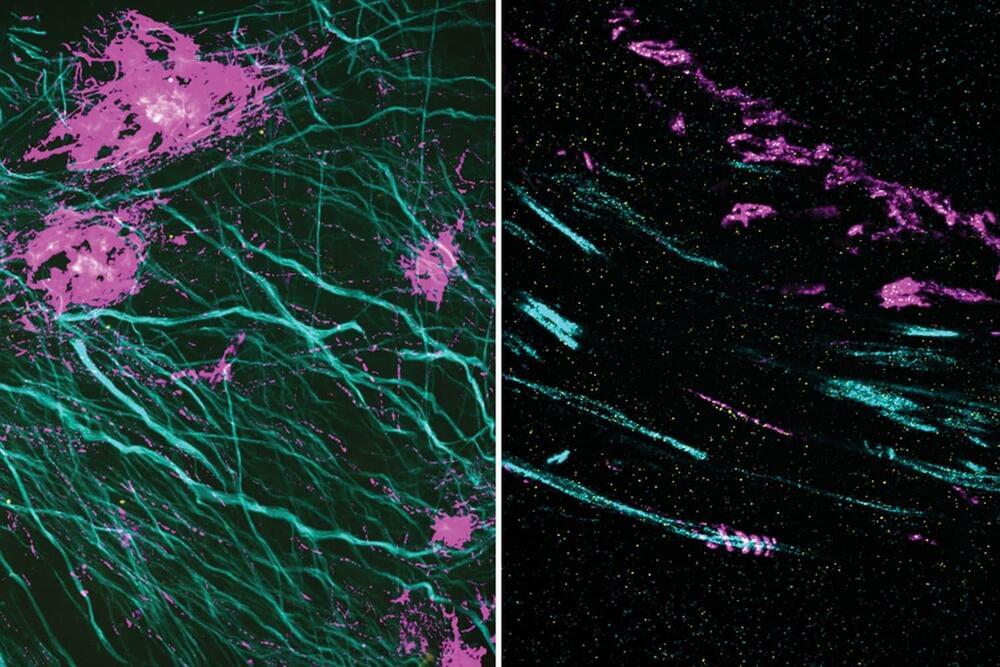The production of nanodiamonds from PET plastic paves the way toward a new form of recycling, and even has implications for exoplanets that rain diamonds.



The skin is one of the largest and most accessible organs in the human body, but penetrating its deep layers for medicinal and cosmetic treatments still eludes science.
Although there are some remedies—such as nicotine patches to stop smoking—administered through the skin, this method of treatment is rare since the particles that penetrate must be no larger than 100 nanometers. Creating effective tools using such tiny particles is a great challenge. Because the particles are so small and difficult to see, it is equally challenging to determine their exact location inside the body—information necessary to ensure that they reach intended target tissue. Today such information is obtained through invasive, often painful, biopsies.
A novel approach, developed by researchers at Bar-Ilan University in Israel, provides an innovative solution to overcoming both of these challenges. Combining techniques in nanotechnology and optics, they produced tiny (nanometric) diamond particles so small that they are capable of penetrating skin to deliver medicinal and cosmetic remedies. In addition, they created a safe, laser-based optical method that quantifies nanodiamond penetration into the various layers of the skin and determines their location and concentration within body tissue in a non-invasive manner—eliminating the need for a biopsy.

Composite particles with submicron sizes can be produced by irradiating a suspension of nanoparticles with a laser beam. Violent physical and chemical processes take place during irradiation, many of which have been poorly understood to date. Recently completed experiments, carried out at the Institute of Nuclear Physics of the Polish Academy of Sciences in Cracow, have shed new light on some of these puzzles.
When a laser beam strikes agglomerates of nanoparticles suspended in a colloid, events occur that are as dramatic as they are useful. The tremendous increase in temperature leads to the melting together of nanoparticles into a composite particle. A thin layer of liquid next to the heated material rapidly transforms into vapor, and whole sequences of chemical reactions take place under physical conditions that change in fractions of a second. Using this method, called laser melting, scientists from the Institute of Nuclear Physics of the Polish Academy of Sciences (IFJ PAN) in Cracow not only produced new nanocomposites, but also described some of the poorly understood processes responsible for their formation.
“The laser melting process itself, consisting of irradiating particles of material in suspension with unfocused laser light, has been known for years. It is mainly used for the production of single component materials. We, as one of only two research teams in the world, are trying to use this technique to produce composite submicron particles. In this area, the field is still in its infancy, there are still many unknowns, hence our joy that some puzzles that perplexed us have just been unraveled,” says Dr. Żaneta Świątkowska-Warkocka, a professor at IFJ PAN, the co-author of a scientific article just published in the journal Scientific Reports.

Are you ready to put mini robots in your mouth?
Do you get lazy about brushing your teeth? Well, soon microbots could do the whole thing for you. A multidisciplinary team at the University of Pennsylvania has created a novel automated way to perform brushing and flossing through robotics, according to a press release published by the institution last month.
The development could be particularly useful for those who lack the manual dexterity to clean their teeth effectively themselves.
A shapeshifting robotic microswarm may one day act as a toothbrush, rinse, and dental floss in one.
The technology, developed by a multidisciplinary team at the University of Pennsylvania, is poised to offer a new and automated way to perform the mundane but critical daily tasks of brushing and flossing. It’s a system that could be particularly valuable for those who lack the manual dexterity to clean their teeth effectively themselves.
The building blocks of these microrobots are iron oxide nanoparticles that have both catalytic and magnetic activity. Using a magnetic field, researchers could direct their motion and configuration to form either bristlelike structures that sweep away dental plaque from the broad surfaces of teeth, or elongated strings that can slip between teeth like a length of floss. In both instances, a catalytic reaction drives the nanoparticles to produce antimicrobials that kill harmful oral bacteria on site.

Solar cell manufacturing just became easier, more efficient, and less costly. A team of researchers at DOE’s Lawrence Berkeley National Laboratory (Berkeley Lab), in collaboration with UC Berkeley, has discovered a unique material that can be used as a simpler approach to solar cell manufacturing, the team reported.
This material is a crystalline solar material with a built-in electric field — also known as “ferroelectricity” — that was reported earlier this year in the journal Science Advances.
Light microscopy image of nanowires, 100 to 1,000 nanometers in diameter, grown from cesium germanium tribromide (CGB) on a mica substrate. The CGB nanowires are samples of a new lead-free halide perovskite solar material that is also ferroelectric. (Credit: Peidong Yang and Ye Zhang/Berkeley Lab)
Solar panels, also known as photovoltaics, rely on semiconductor devices, or solar cells, to convert energy from the sun into electricity.
To generate electricity, solar cells need an electric field to separate positive charges from negative charges. To get this field, manufacturers typically dope the solar cell with chemicals so that one layer of the device bears a positive charge and another layer a negative charge. This multilayered design ensures that electrons flow from the negative side of a device to the positive side – a key factor in device stability and performance. But chemical doping and layered synthesis also add extra costly steps in solar cell manufacturing.

Inside a living cell, proteins and other molecules are often tightly packed together. These dense clusters can be difficult to image because the fluorescent labels used to make them visible can’t wedge themselves in between the molecules.
MIT researchers have now developed a novel way to overcome this limitation and make those “invisible” molecules visible. Their technique allows them to “de-crowd” the molecules by expanding a cell or tissue sample before labeling the molecules, which makes the molecules more accessible to fluorescent tags.
This method, which builds on a widely used technique known as expansion microscopy previously developed at MIT, should allow scientists to visualize molecules and cellular structures that have never been seen before.

Hydrogen fuel promises to be a clean and abundant source of energy in the future – as long as scientists can figure out ways to produce it practically and cheaply, and without fossil fuels.
A new study provides us with another promising step in that direction.
Scientists have described a relatively simple method involving aluminum nanoparticles that are able to strip the oxygen from water molecules and leave hydrogen gas.

Alloy that exceeds the strength and ductility of other state-of-the-art additively manufactured materials. This breakthrough could lead to higher-performance components for applications in aerospace, medicine, energy, and transportation. The work was done by researchers from the University of Massachusetts Amherst and the Georgia Institute of Technology. It was led by Wen Chen, assistant professor of mechanical and industrial engineering at UMass, and Ting Zhu, professor of mechanical engineering at Georgia Tech, will be published today (August 3, 2022) in the journal Nature.
High entropy alloys (HEAs) have become increasingly popular as a new paradigm in materials science over the past 15 years. They are comprised of five or more elements in near-equal proportions and offer the ability to create a near-infinite number of unique combinations for alloy design. Traditional alloys, such as brass, stainless steel, carbon steel, and bronze, contain a primary element combined with one or more trace elements.

Watch over 2,400 documentaries for free for 30 days AND get a free Nebula account by signing up at https://curiositystream.com/upandatom and using the code “upandatom”. Once you sign up you’ll get an email about Nebula. If you don’t get one, contact the curiosity stream support team and they will set you up with a free Nebula account right away.
Nebula: https://watchnebula.com/
Hi! I’m Jade. If you’d like to consider supporting Up and Atom, head over to my Patreon page smile
https://www.patreon.com/upandatom.
Visit the Up and Atom store.
https://store.nebula.app/collections/up-and-atom.
*ALL THE LINKS*